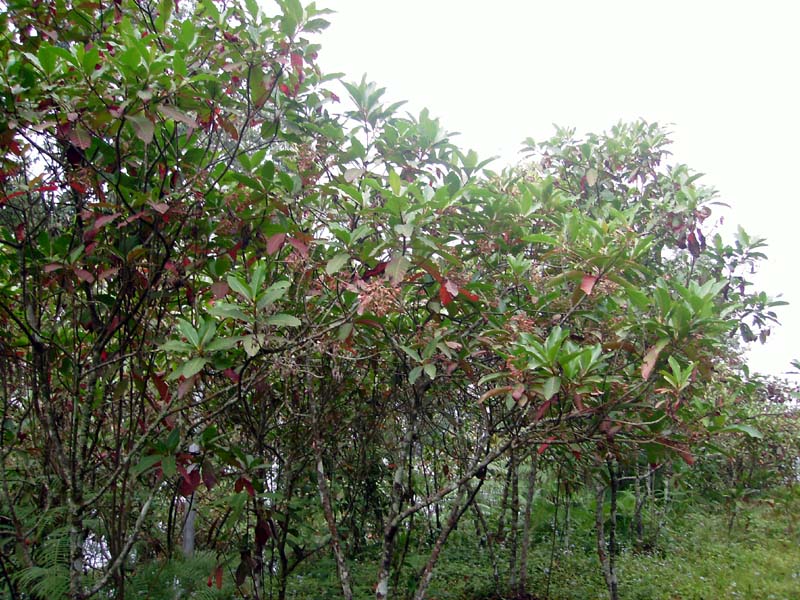
What is Darjeeling’s link to the possible COVID-19 cure?
Darjeeling is famous across the world for its aromatic tea. But in the wake of COVID-19 pandemic, one of its lesser-known herbal treasures is eliciting a renewed interest, at least among the locals, as scientists turned to anti-malarial drugs as a possible cure for COVID-19.

Darjeeling is famous across the world for its aromatic tea. But in the wake of COVID-19 pandemic, one of its lesser-known herbal treasures is eliciting a renewed interest, at least among the locals, as scientists turned to anti-malarial drugs as a possible cure for COVID-19.
The Indian Council of Medical Research (ICMR) too issued an advisory for using anti-malarial drug hydroxychloroquine as a preventive medicine against the coronavirus.
The emphasis on the anti-malarial drug has brought the focus back on quinine, a potent anti-malarial agent. The quinine incidentally has a long historical link with our queen of the hills.
Quinine comes from the bark of the cinchona tree, which has been in use for the treatment of malaria from as early as the 1600s, according to the Medicine for Malaria Venture, a Geneva-based research body.
Chloroquine, which is now in high demand, is a synthetic form of quinine.
“The craze for malarial drugs has created shortage of quinine world over,” said a senior manager of the Bengal Chemicals and Pharmaceuticals Ltd, the first pharmaceutical company in India. It manufactures anti-malarial drugs like chloroquine phosphate and quinine sulphate.
Related news | Explained: What is antibody test for COVID-19 and why is it important?
Since the synthetic variant is in short supply, cinchona planters in Darjeeling are hoping that pharma companies would now opt for the organic quinine, spurring the demand for the bark of cinchona trees.
The Directorate of Cinchona and Other Medicinal Plants (DCOMP) at Mungpoo in Darjeeling district already received two sale queries after the COVID-19 outbreak. The DCOMP is the lone body in the country that produces and sells cinchona tree barks for production of quinine. It oversees the cinchona plantation spread over around 6,900 acres of land in the district, the only place in India where the medicinal plant is being commercially cultivated.
The cultivation has a long and interesting history. The commercial cultivation of this tree, a native of South America, started in 1862 in Darjeeling hills under the direction of Dr Thomas Anderson, the then Superintendent of the Royal Botanical Garden, Calcutta (now Kolkata). By then, the medicinal value of the plant in curing malaria, a dreaded tropical disease, which used to then kill thousands of people every year, had become well known.
As the demand for quinine manufactured from the cinchona tree shot up, the British administration also engaged Chinese prisoners in the cultivation of the herbs at Ooty in Nilgiri hills in 1864.
Related news | India to start antibody tests on people to detect COVID-19 exposure
The British administration was interested in cinchona because it was keen to protect the lives of its troops and officials after being shaken up by the ‘Sepoy Mutiny’ of 1857, wrote Lucile H Brockway in a collective volume titled ‘Seeds and Sovereignty—the use and control of plant genetic resources’.
Along with the tea cultivation that preceded by about two decades, these crops became the economic backbone of the hills. But research done during the World War-II led to quinine being first synthesized in a laboratory in 1944. The outcome was production of many anti-malarial drugs such as chloroquine, significantly reducing the demand for the organic quinine.
“Cultivation in Ooty stopped in the 60s as the demand for the quinine fell,” said Dr Samuel Rai, the director of the DCOMP. But in Darjeeling, the magical herb continued to be cultivated. “Now, the directorate has even been trying to expand the plantation area by 90 to 100 acres every year,” he said.
“This season we harvested around 2 lakh kg of barks and sold it through auction at Rs 111 per kg,” Dr Rai told The Federal.
The harvesting is done during December and January, since it is easier to separate the bark from the wood in winter.
Related news | US ready to supply ventilators to countries in need, says Trump
The locals mostly procure the bark from the auction and sell it to pharmaceutical companies. However, since the outbreak of COVID-19, Rai disclosed that the directorate received two queries from Madhya Pradesh and Kanpur in Uttar Pradesh. After the lockdown is lifted, they would go ahead with the required procedure.
“Suddenly, even the villagers here are enquiring about the cinchona bark. May be they are thinking of consuming it in a crude form by chewing the bark to stave off coronavirus,” he quipped.
This sudden curiosity about quinine, Dr Rai hopes, will bring good news for the cinchona cultivation, which currently provides direct employment to about 7,000 people.

